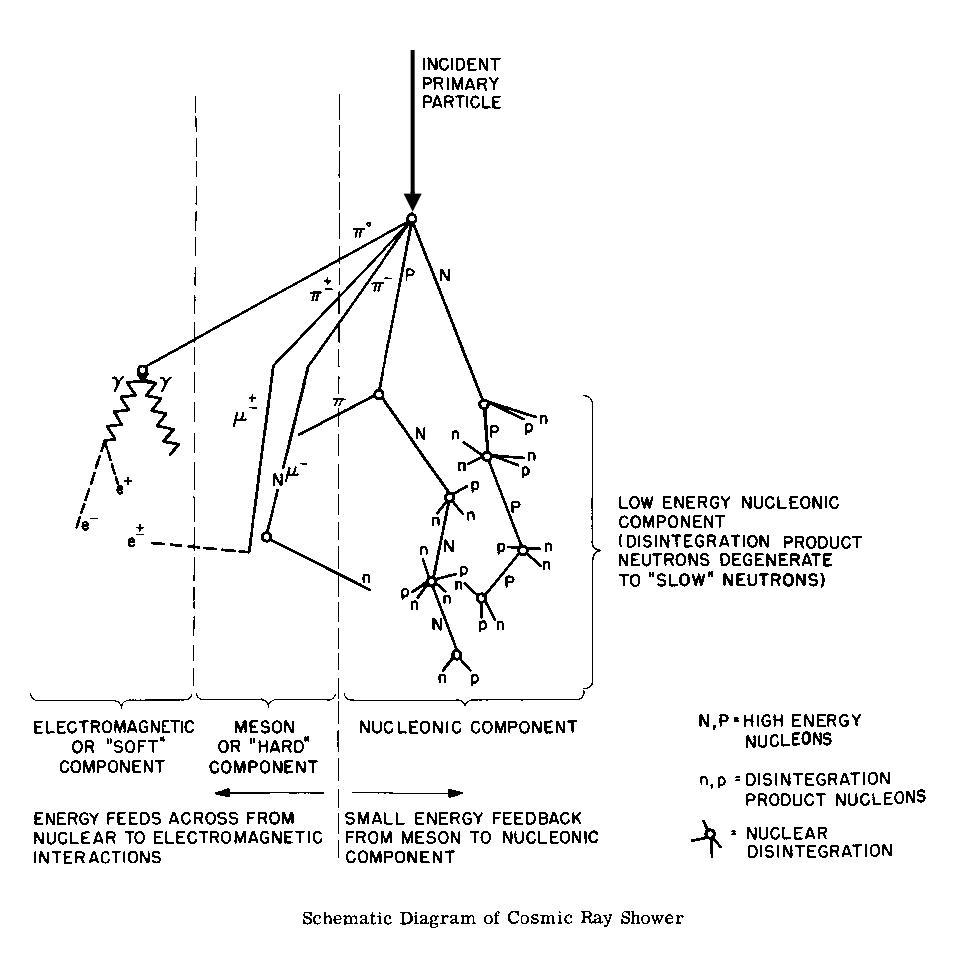„Cosmic rays“ is the term used to indicate protons (or other heavier nuclei) that „shoot“ from the Universe to us. We know that many of these are coming from the Sun, but there are some that have very high energies that come from unknown sources. The Earth is constantly hit by these particles.
When a proton from this radiation hits the Earth atmosphere (primary cosmic ray), it collides with other nuclei and produces, in the nuclear reactions, several particles such as pions and neutrons. Pions quickly decay into muons (secondary cosmic rays). Muons are also very instabile particles, they decay in 2,2 microseconds , but, since they travel very fast and according to the theory of relativity, „their“ time goes slower and they can reach the Earth's ground.
The muon's
lifetime (how much time it
takes for the muon
to decay) is a complete random process. Generally,
there is always the same percentage of probabilitny that a muon decays
in a unit of time (ca. 63,2% in 2,2 microseconds.
An "air shower"
is the term used to indicate these nuclear reactions, as the resulting
particles expand (and eventually collide and divide) in a much wider
area, and the imaginary track left by these particles looks roughly
like a shower.
Cosmic rays were
discovered after radiation; when in 1903 an experiment showed that an
isolated radiation relevator shows always some signal, the theory of
the existence of a highly penetrating radiation was confirmed. Further
experiments and measurements were conduct by the austrian physics
Victor Franz Hess and Wener Kolhörster (1912-1914). They
discovered that the "rays" were coming by the outer space rather than
from the Earth using a balloon and a detector. The detector showed
higher rates as the balloon went up. These measurement were conducted
in 3 years, with a great precicision. Hess won the Nobel prize with
Carl David Anderson, the discoverer of the positron.
Today, further
research about cosmic rays sources and physics are done by the
international experiments of Auger,
IceCube and others.




